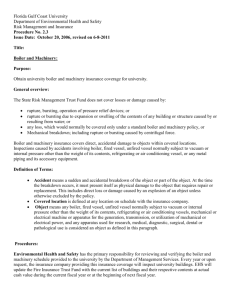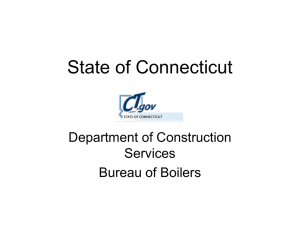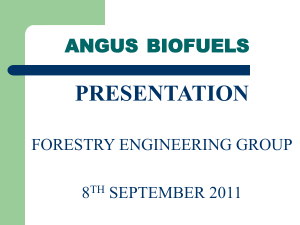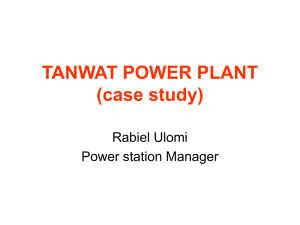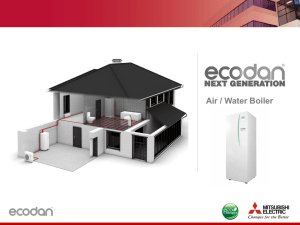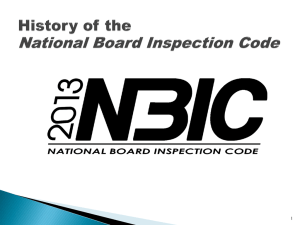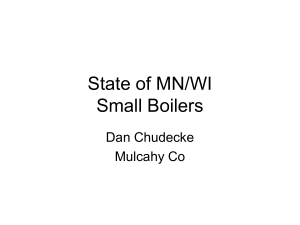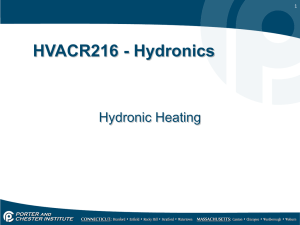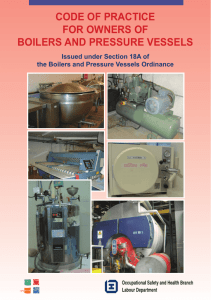FIRED AND UNFIRED PRESSURE VESSELS
advertisement
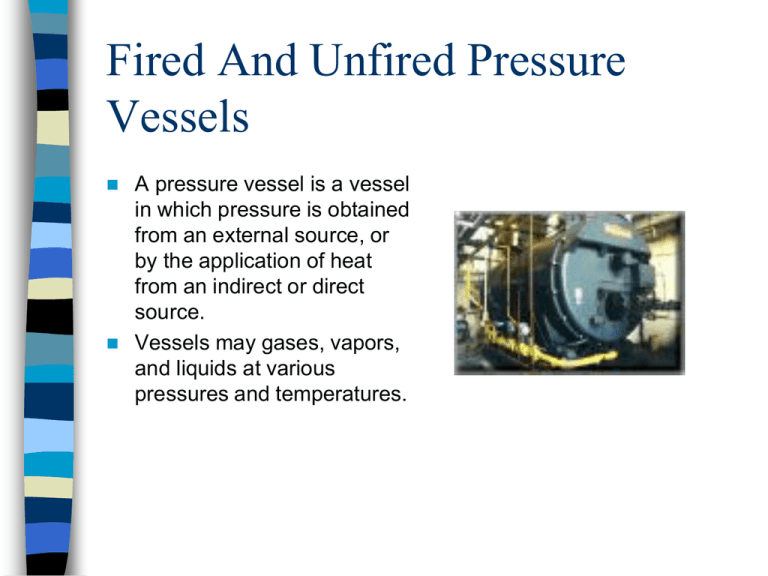
Fired And Unfired Pressure Vessels A pressure vessel is a vessel in which pressure is obtained from an external source, or by the application of heat from an indirect or direct source. Vessels may gases, vapors, and liquids at various pressures and temperatures. Fired And Unfired Pressure Vessels Fired pressure vessel – External heat source Unfired pressure vessel – No external heat source Pressure Calculations Longitudinal Stress versus Hoop Stress Design And Construction Of Pressure Vessels ASME – American Society of Mechanical Engineers ASME Boiler and Pressure Vessel Code – rules for the design, fabrication, and inspection of boilers and pressure vessels National Board of Boiler and Pressure Vessel Inspectors Composed of chief boiler and pressure vessel inspectors representing states, cities, and provinces enforcing pressure equipment laws and regulations NBIC Code National Board Inspection Code (NBIC) is a consensus document Sets standards for the installation, inspection, and repair and/or alteration of boilers, pressure vessels, and pressure relief devices Electric Boilers A power boiler, heating boiler, high or low temperature water boiler in which the source of heat is electricity. High Temperature Water Boiler A water boiler intended for operations at pressures in excess of 160 psig or temperatures in excess of 250 degrees F. Hot Water Heating Boiler A boiler in which no steam is generated, from which hot water is circulated for heating purposes and then returned to the boiler, and which operates at a pressure not exceeding 160 psig or a temperature of 250 degrees F at the boiler outlet. Process Steam Generator A vessel or system of vessels comprised of one or more drums and one or more heat exchange surfaces as used in waste heat or heat recovery type steam boilers. Unfired Steam Boiler A vessel or system of vessels intended for operation at a pressure in excess of 15 psig for the purpose of producing and controlling an output of thermal energy. Water Heater Supply Boiler A closed vessel in which water is heated by combustion of fuels, electricity or any other source and withdrawn for use external to the system at pressure not exceeding 160 psig and should include all controls and devices necessary to prevent water temperatures from exceeding 210 degrees F. External Inspection As complete an examination as can be reasonably made of the external surfaces and safety devices while the boiler or pressure vessel is in operation. Internal Inspection As complete an examination as can be reasonably made of the internal and external surfaces of a boiler or pressure vessel while it is shut down and while manhole plates, handhole plates or other inspection opening closures are removed as required by the inspector. Safety Appliances Include, but not be limited to: – Rupture disk device – Safety relief valve – Temperature limit control – Pressure limit control – Major gas train controls – Low water cutoffs – Flame supervisory unit (igniter) – High and low gas pressure switches – Trial for ignition limiting timer (15 seconds) Safety Appliances Relief Valve An automatic pressurerelieving device actuated by a static pressure upstream of the valve which opens further with the increase in pressure over the opening pressure. It is used primarily for liquid service. Rupture Disk Device A nonreclosing pressure-relief device actuated by inlet static pressure and designed to function by the bursting of a pressure-containing disk. Safety Relief Valve An automatic, pressure-actuated relieving device suitable for use as a safety or relief valve, depending on application. Temperature/pressure Relief Valve A valve set to relieve at a designated temperature and pressure. Common Failures Of Pressure Vessels Error in design and construction Improper operation Corrosion Failure to inspect properly Lack of preventative maintenance Boilers In Use Majority are automatic or semi-automatic Operate unattended for long periods of time Controlling Boiler Fires Fully enclosed boiler room Fire rated doors and walls No combustible materials Fire Protection Provide clearance around boilers – Loss control strategies Boiler explosions and fires – Testing program – Safety relief devices Repair program – Preventative maintenance program Keep a boiler log Boiler Maintenance Most of the boiler failures are due to inadequate maintenance Low Water Test Should be tested with the boiler operating, the burner should shut off, if it does not it should be investigated. Tests should be made daily on pressures>15 PSI and weekly for others. Hydrostatic Test Applied to Existing Vessels To determine tightness, the hydrostatic test pressure need be no greater than the set pressure of the safety valve having the lowest setting. For safety tests, the pressure should be equal to 2 times the maximum allowable working pressure, less corrosion factor, as applicable. All major repairs and alterations should require a safety test. Blowoff Equipment All materials used in the fabrication of object blowoff equipment should comply with code. All blowoff equipment should be equipped with openings to facilitate cleaning and inspection. Open valves on each lowwater fuel cutoff valve, low water alarm, tests the switches and clears out debris and obstructions. Alterations, Retrofits and Repairs to Objects Alterations, retrofits, and repairs should be made so that the object should be at least as safe as the original construction. Alterations, retrofits, and repairs should be done as though new construction and should comply with the applicable code or codes. Welding Repairs or alterations by welding should be approved beforehand by an authorized inspector. All welding repairs or alterations must be in accordance with the “repairs and alterations to boilers and pressure vessels by welding, of the NB code. All welding should be done by an organization holding a national board “R” stamp. Clearance All objects should be so located that adequate space is provided for the proper operation, inspection, and necessary maintenance and repair of the boiler and its controls. Exit From Rooms Containing Objects Rooms exceeding 500 square feet of floor area and containing one or more boilers having a fuel-burning capacity of 1 million Btu’s should have two means of exit remotely located from each other on each level. Air and Ventilation A permanent source of outside air should be provided for each room to permit satisfactory combustion of fuel and ventilation if necessary under normal operations. The minimum ventilation for coal, gas, or oil burners in rooms containing objects is based on the Btu’s per hour, required air, and louvered area.
